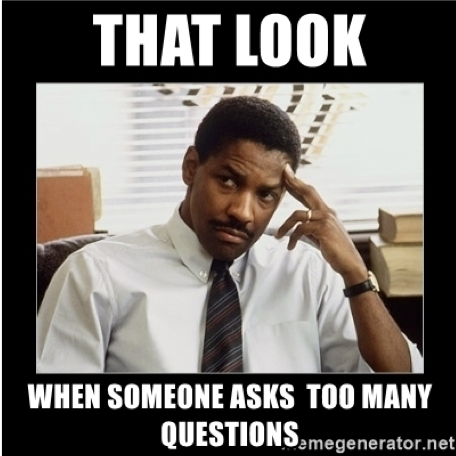by Aaron S. Richmond
Metropolitan State University of Denver

In many of the wonderful blog posts in Improve with Metacognition, scholars around the globe have described various teaching techniques and strategies to improve metacognition in our students. Many of these techniques require students to openly describe their learning behaviors with the hopes that they will become more metacognitively aware. For example, asking students how, where, and when they study, to reflect on the use of the strategies, and how they can improve their study strategies. Many of these examples are executed in a class setting and even sometimes students are asked to share their strategies with one another and discuss how these strategies work, when they work, when they don’t, etc. In such cases when students are sharing their beliefs about metacognition (e.g., learning strategies) we know that students benefit by improving their own metacognition through this process, but is it possible that they are improving the overall level of the group or class metacognition? Meaning, is it possible that there is more than just an individual metacognitive process occurring—is it possible that there is some form of distributed metacognition occurring across the students that is shared?
What is Distributed Metacognition?
Little is known about the concept of distributed metacognition (Chiu & Kuo, 2009; Wecker, & Fischer, 2007, July). In fact, in a Google Scholar search, there are only 38 results with the exact phrase “distributed metacognition”. In this limited research there is no clear operational definition of distributed metacognition. Therefore, I am interested in understanding and have a discussion with you all about the concept of distributed metacognition. From what I gather, it is not the spreading of metacognition over time (akin to distributed practice, spacing, or studying). Nor am I referring to what Philip Beaman (2016) referred to in the context of machine learning and human distraction in his IwM blog. However, could it be that distributed metacognition is the ability of two or more individuals to first talk and discuss their personal metacognition (the good, the bad, and the ugly) and to then to use these metacognitive strategies in a distributed manner (i.e., the group discusses and uses a strategy as a group)? Furthermore, Chiu and Kuo’s (2009) definition of social metacognition may be akin to distributed metacognition. Although they have no empirical evidence, they suggest that metacognitive tasks can be distributed across group members and thus they engage in “social metacognition”. For instance, in task management, students can simultaneously evaluate and monitor, regulate others to reduce mistakes and distraction, and divide and conquer to focus on subsets of the problem. Finally, in discussion with John Draeger (an IwM co-creater), he asked whether distributed metacognition was “…something over and above collaborative learning experiences that involve collective learning about metacognition and collectively practicing the skill?” After giving it some thought, my answer is, “I think so.” As such, let me try to give an example to illustrate whether distributed metacognition exists and how we may define it.
Using IF-AT’s Collaboratively
I have written on the utility of using immediate feedback assessment techniques (IF-AT) as a metacognitive tool for assessment. I often use IF-AT in a team-based and collaborative learning way. I have students get into groups or dyads and discuss and debate 1 or 2 questions on the assessment. They then scratch off their answer and see how they do. Regardless of whether they were correct or not, I have students discuss, debate, and even argue why they were so adamant about their answer as an individual and as a group. I then have students then discuss, debate, and answer two more questions with one another. They have to, as a group, come up with strategies for monitoring their performance, steps to solve the problem, etc. They repeat this process until the quiz is finished. When my students are doing this IF-AT process, I find (I know introspection is not the best science) that they become so intrigued by other students’ metacognitive processes, that they often slightly modify their own metacognitive processes/strategies AND collectively come up with strategies to solve the problems.
So, what is going on here? Are students just listening to other students’ metacognitive and epistemological beliefs and choosing to either internalize or ignore these beliefs? Or in contrast, when there is a group task at hand, do students share (i.e., distribute) the metacognitive strategy that they learned through the group process and then use it collectively? For example, when students perform activities like dividing tasks and assigning them to others (i.e., resource demand and monitoring), regulating others’ errors or recognize correct answers (i.e., monitoring) within the group— would these behaviors count as distributed metacognition? Is it possible that in these more collaborative situations, the students are not only engaging in their own internal metacognition, but that they are also engaging in a collective distributed cognition among the group used in a collective manner? That is, in the IF-AT activity example, students may be both becoming more metacognitively aware, changing their metacognitive beliefs, and experimenting with different strategies—on an individual level—AND they may also have a meta-strategy that exists among the group members (distributed metacognition) that they then use to answer the quiz questions and become more effective and successful at completing the task.
Currently (haha), I am leaning towards the latter. I think that the students might be engaging in both individual and distributed metacognition in part because of an article in the Proceedings of the Annual Meeting of the Cognitive Science Societyby Christopher Andersen (2003). Andersen found that when students worked in pairs to solve two science tasks, that over time, students who were in pairs rather than working individually made more valid inferences (correct judgments and conclusion about the task) than when they worked alone. Specifically, on the first trial of solving a problem, the dyads use relatively ineffective strategies, on the second trial they expanded and adapted their use of effective strategies, and by the third trial, the dyad expanded even more effective strategies. Andersen (2003) concluded that the students were collectively consolidating their metacognitive strategies. Meaning, when working collaboratively, students employed more effective metacognitive strategies that led to solving the problem correctly. Although this is only one study, it provides a hint that distributed metacognition may exist.
Tentative Conclusions

So, where does this leave us? As almost always, I am awash with questions. I have more questions than answers. Thus, what do you think? As defined, do you think that distributed metacognition exists? If not, how would you describe what is going on when students share their metacognitive strategies and then employ metacognitive strategies in a group setting? Is this situation just a product of collaborative or cooperative learning?
If you do believe distributed metacognition exists, how do we measure it? How do we create instructional methods that may increase it? Again, I am full of questions and my mind is reeling about this topic, and I would love to hear from you to know your thoughts and opinions.
References
Andersen, C. (2003, January). Distributed metacognition during peer collaboration. In Proceedings of the Annual Meeting of the Cognitive Science Society (Vol. 25, No. 25).
Beaman, P. (2016, May 14th). Distributed metacognition: Insights from machine learning and human distraction. Retrieved from https://www.improvewithmetacognition.com/distributed-metacognition-insights-machine-learning-human-distraction/
Chiu, M. M., & Kuo, W. S. (2009). From metacognition to social metacognition: Similarities, differences, and learning. Journal of Educational Research, 3(4), 1-19. Retrieved from https://www.researchgate.net/profile/Ming_Chiu/publication/288305672_Social_metacognition_in_groups_Benefits_difficulties_learning_and_teaching/links/58436dba08ae2d217563816b/Social-metacognition-in-groups-Benefits-difficulties-learning-and-teaching.pdf
Richmond, A. S. (2017, February 22nd). Scratch and win or scratch and lose? Immediate feedback assessment technique. Retrieved from https://www.improvewithmetacognition.com/scratch-win-scratch-lose-immediate-feedback-assessment-technique/
Wecker, C., & Fischer, F. (2007, July). Fading scripts in computer-supported collaborative learning: The role of distributed monitoring. In Proceedings of the 8th international conference on Computer supported collaborative learning (pp. 764-772).